The next leg of our journey was a little more adventurous (Sept. 21). It would take a plane, a van, and a boat to get us to the point where the Amazon rainforest gives way to a tropical grasslands ecosystem.
We flew in to Rurrenabaque, about 266 miles (428 km) northeast of La Paz and about 11,000 feet closer to sea level. The twin-propellor plane landed in what looked like a patch of cleared jungle. There were no buildings in sight. Buses awaited, so we climbed aboard for the short drive to the “airport,” which was not much bigger than a middle-class home in the States.
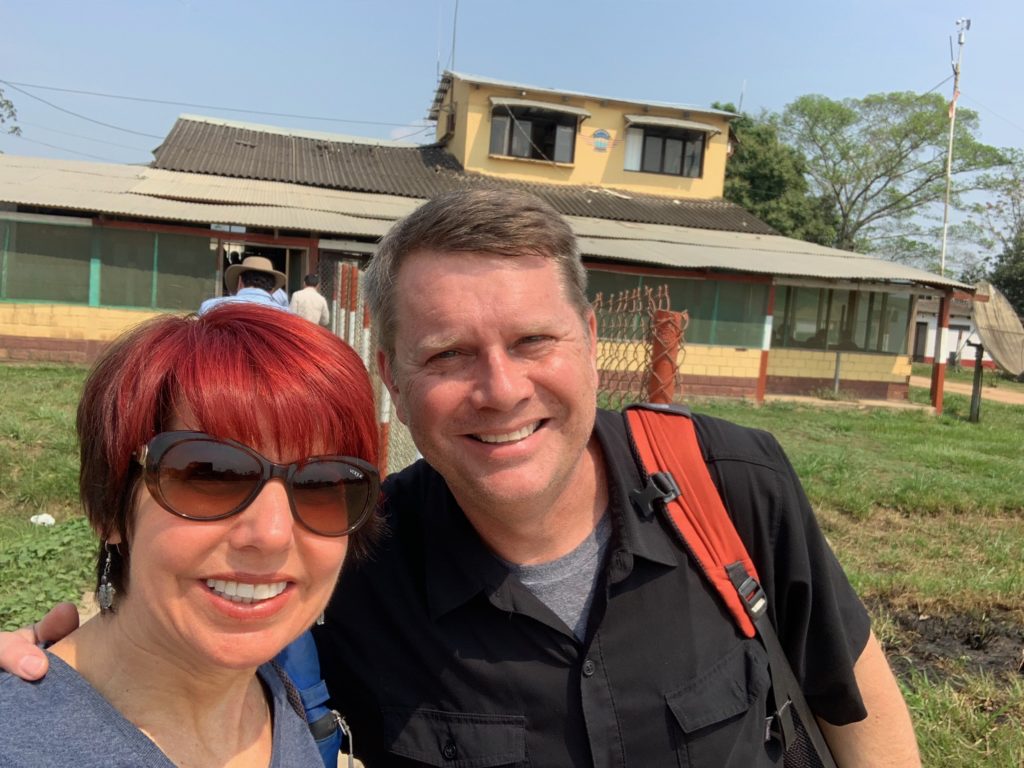
We met our driver, who tossed our luggage on top of his van, and off we went.
“How far is it to the river?” I asked, expecting a ride of 15 minutes or so.
“Mmmm… maybe 3 hours or 3 1/2 hours. Depends on the road,” he answered.
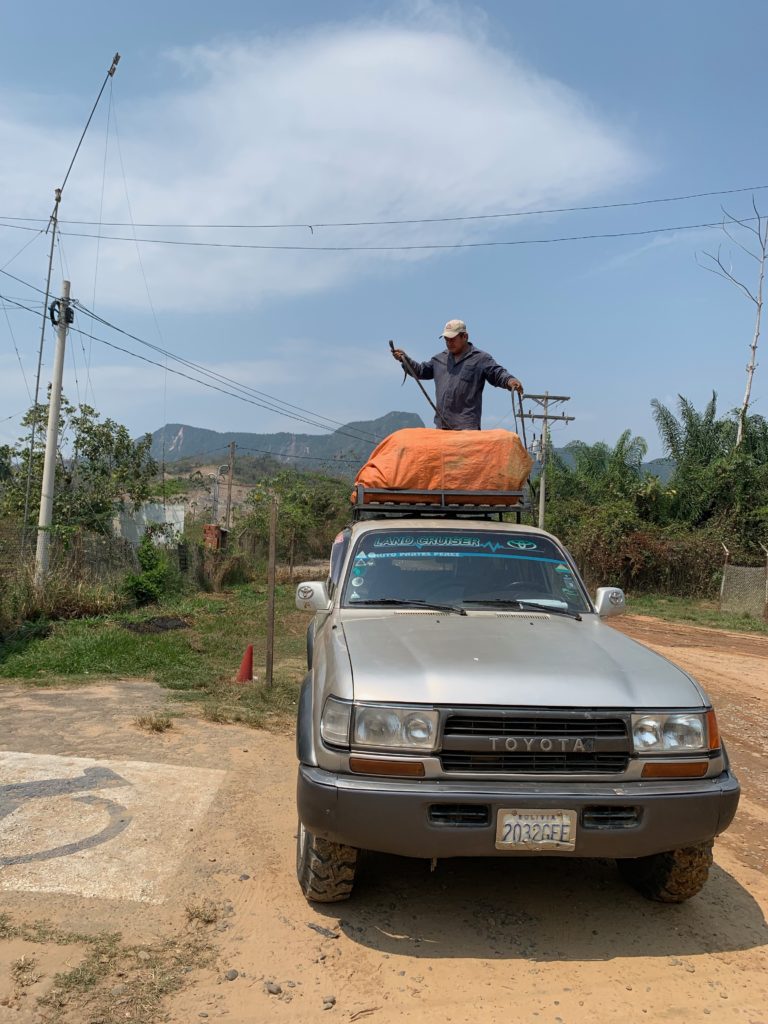
Sure enough, we bounced and bumped and sucked dust for more than three hours on what could only very generously be described as a “road.” Our driver deftly veered to avoid potholes or massive ruts, drove on the wrong side – or even off the road – as needed, zipped past heavy trucks, slowing down at times to search for wildlife. Along the way, we wolfed down Subway sandwiches, which we had picked up in the La Paz airport, something we regretted when we realized we were stopping for lunch. In the small village of San Jose, we sat down to a spread of soup, fish, and various side dishes.
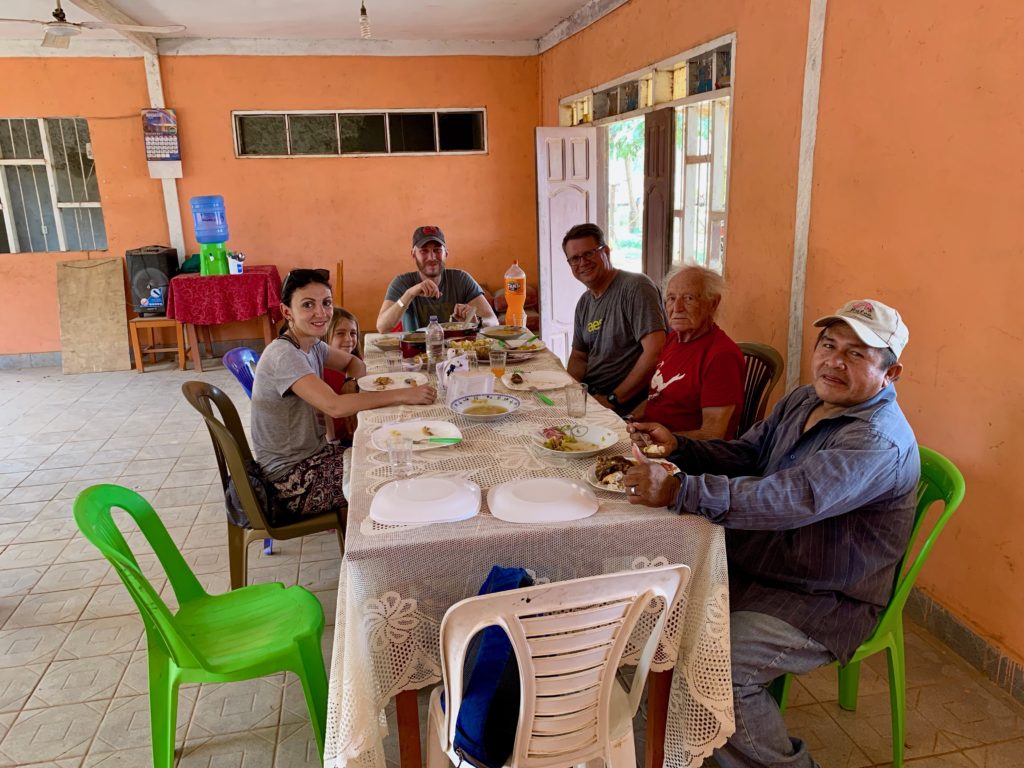
When it comes to travel, I love a lazy beach or a vibrant city as much as anyone. But the real attraction to me is encountering something for the first time: food, animals, music, art … you name it. As soon as we reached the quiet port of Tucumán and met our guide, Norman, we knew this would be a visit overflowing with “firsts.”
Norman led us down a long flight of steps to the banks of the Yacuma River, where we climbed aboard a canoe for another 3-hour journey. We slowly motored upstream to the Yacare Lodge. Norman grew up in the jungle community of San Jose de Uchupiamonas, which was instrumental in developing sustainable eco-tourism projects in the area. He launched his own organization, Madidi Expeditions, in 2015.
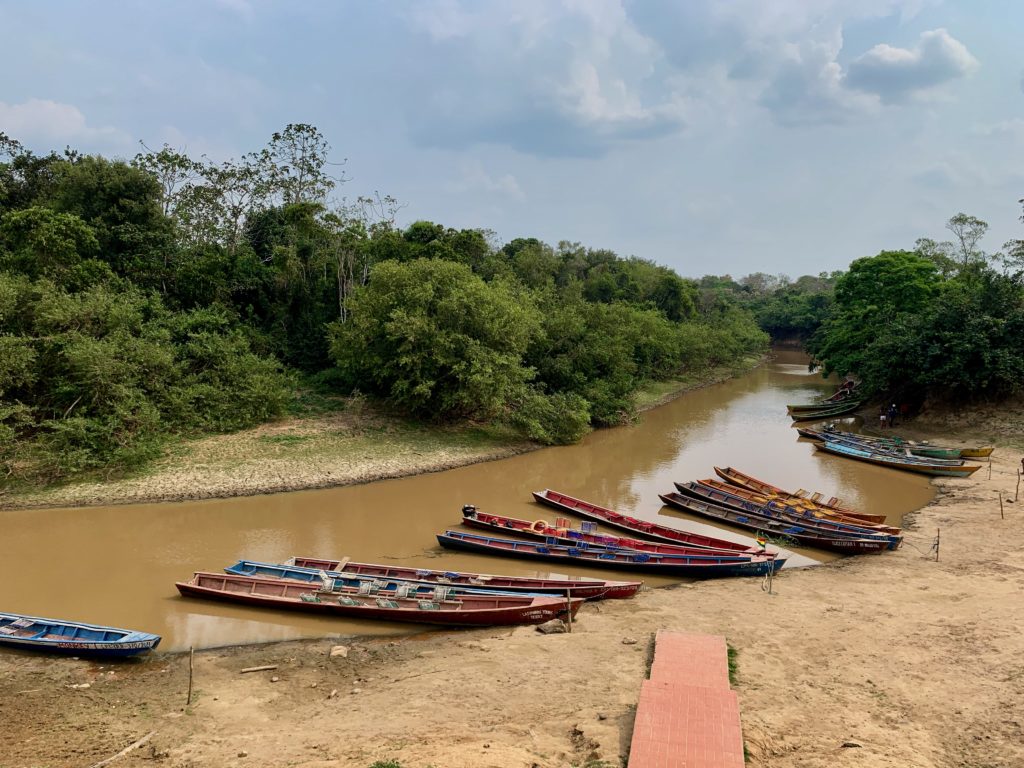
I was hoping to see a capybara, the world’s largest rodent, and maybe a few caiman, a cousin of the alligator. I would have been happy with a single spotting of each. In fact, we stopped counting after a short time. Capybara dotted the riverbanks, munching grass, burrowing into the mud to cool off, or bathing in the shallow water.
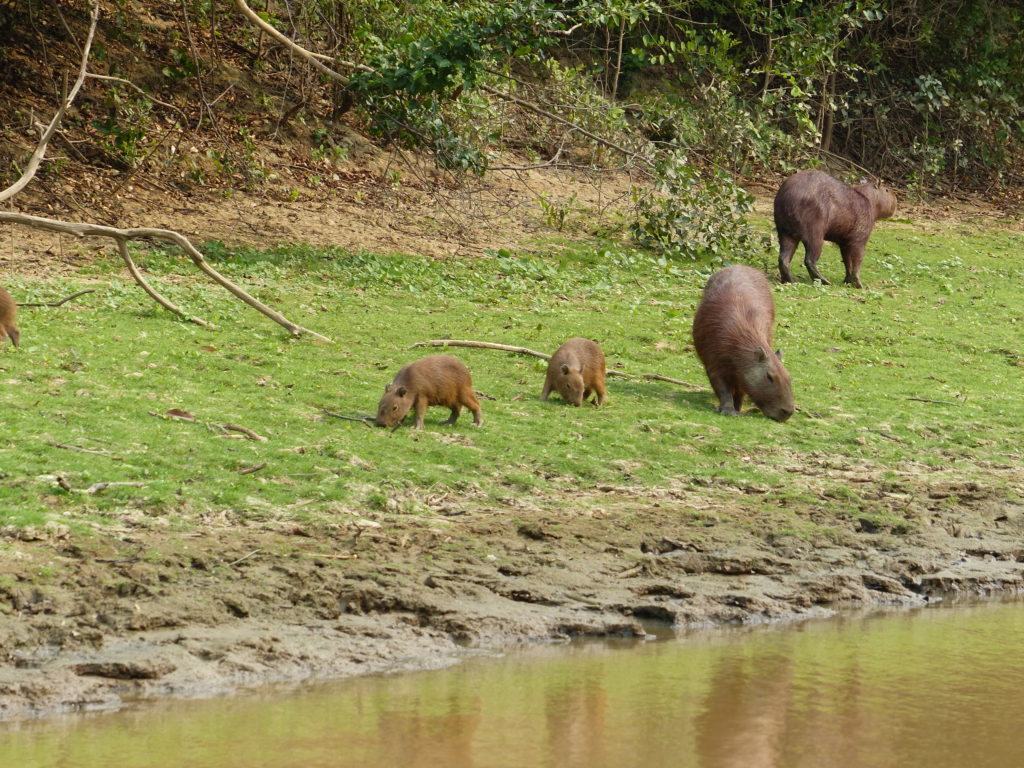
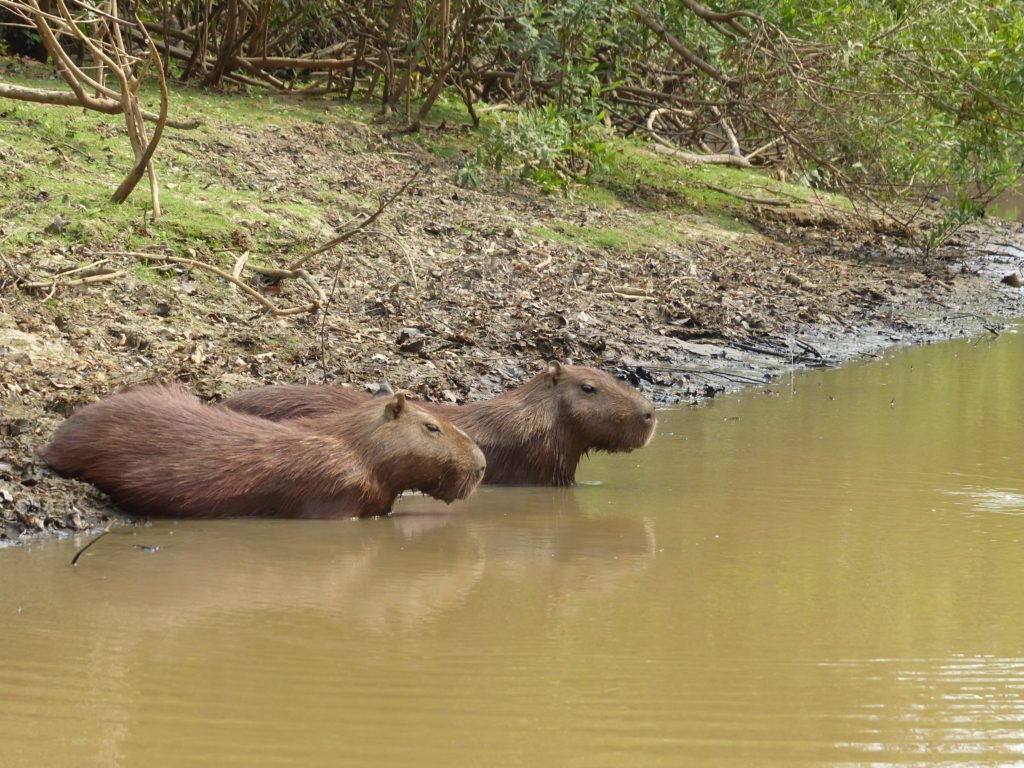
Tony estimated we saw a caiman every three seconds, which would be close to 4,000 caiman on the way to our lodge. Norman explained that two types of caiman dwell here: the speckled caiman and the black caiman, which is bigger with thicker scales.
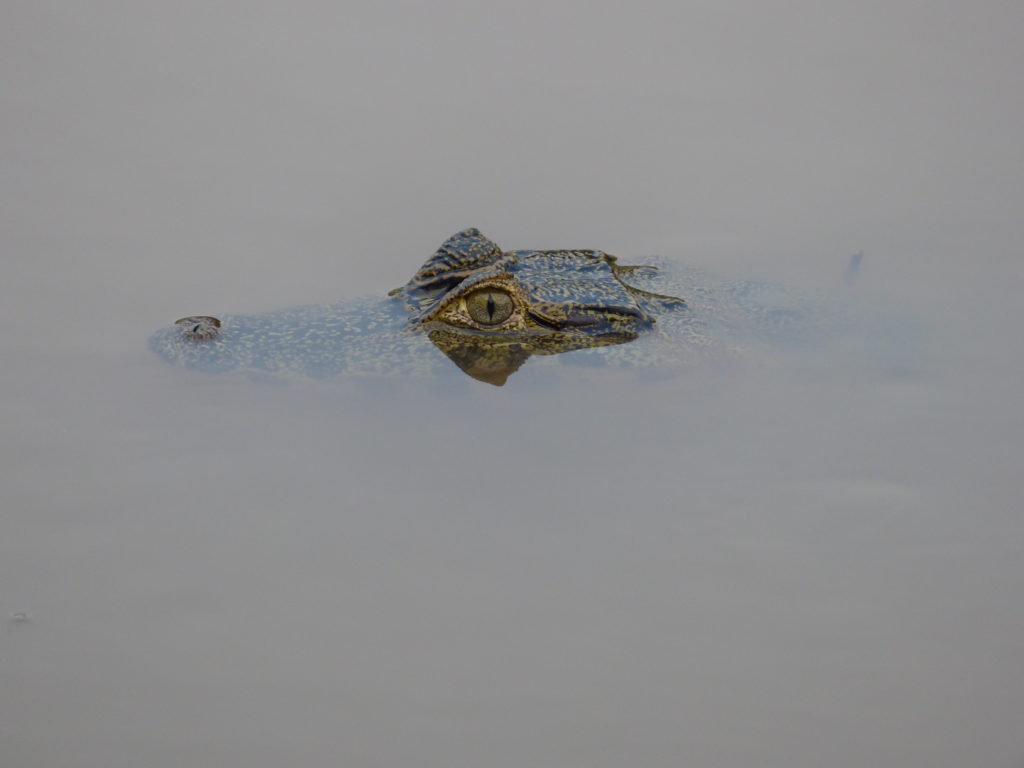
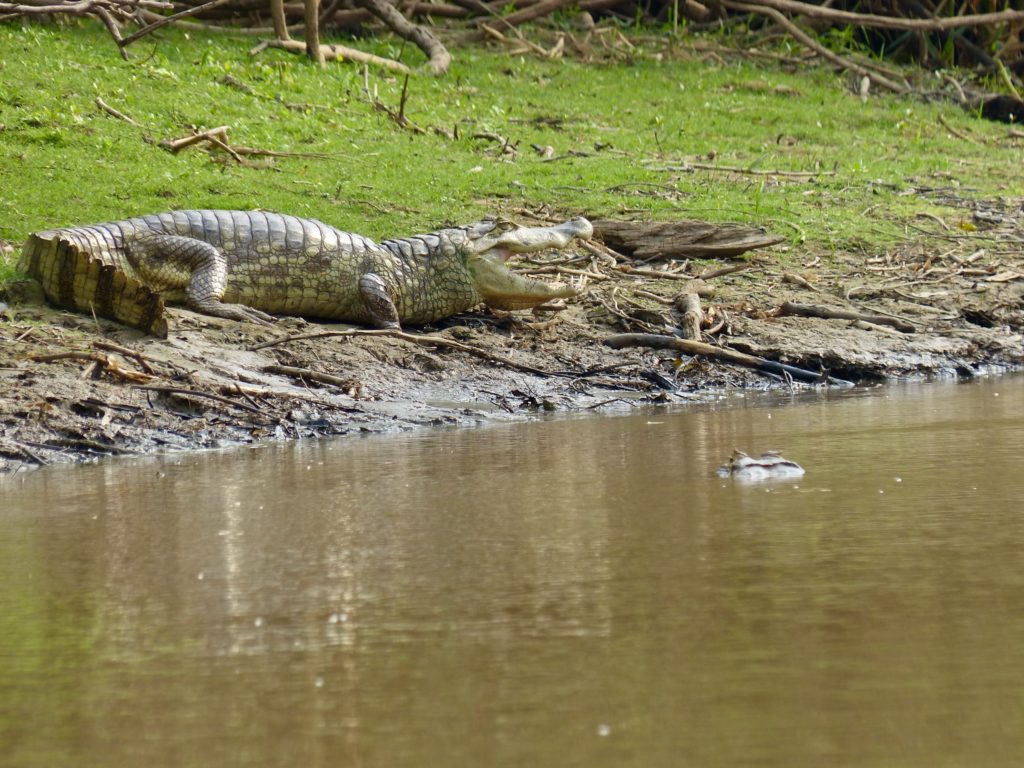
During the boat ride, we also saw countless birds of every size and color. My favorite was the ubiquitous hoatzin, which I nicknamed “jungle chicken.” According to the website Neotropical Birds:
The Hoatzin is such a bizarre and unique bird that it almost has to be seen to be believed. … They move awkwardly, however, and so give themselves away with sounds of crashing through the vegetation, accompanied by loud vocalizations. Hoatzins in effect are flying cows: their diet primarily is young leaves and buds, which are digested in the crop with the aid of bacteria and microbes. Hoatzins nest over the water. The young can swim, and so may drop to the water when threatened. The nestlings retain claws on their wing (lost in the adult), which they use in climbing back to the nest.
How crazy is that? Plus, they just looked cool.
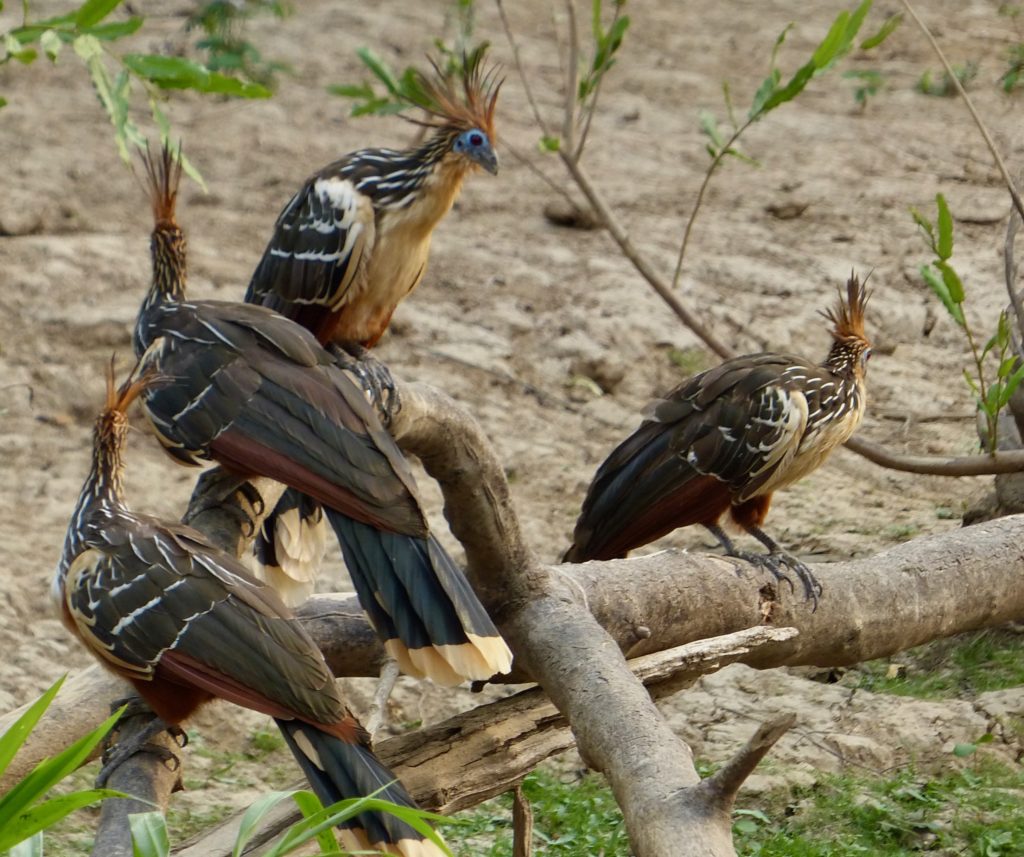
Another highlight of our journey to the lodge occurred when Norman motored the boat close to the shore. Suddenly, a huge troop of yellow squirrel monkeys came swinging through the trees. My calm delight turned to squealing surprise as they bounded on to our boat and scampered across our backs, ostensibly in search of food. Berlin shrieked with fear. It was awesome.
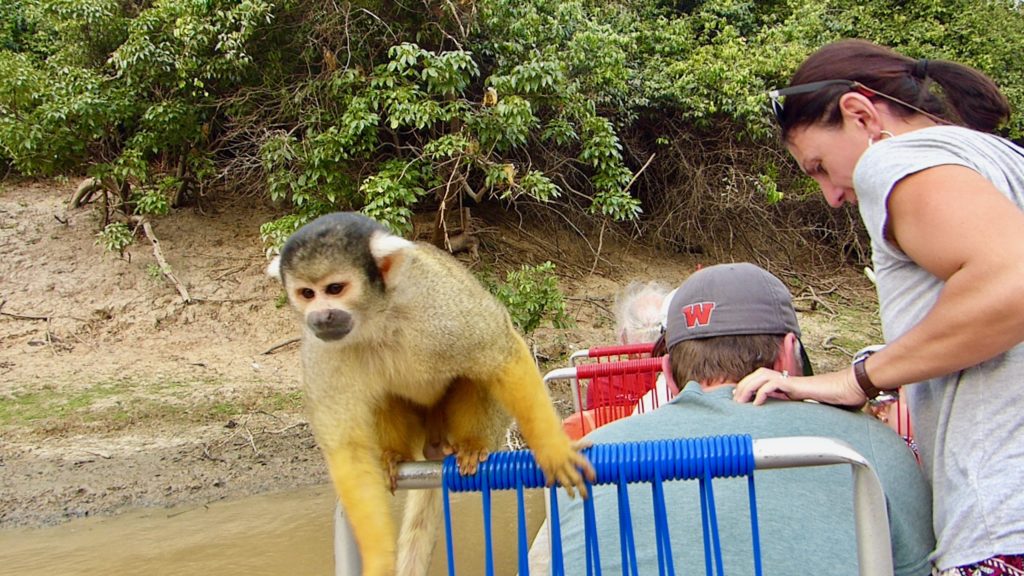
We also got glimpses of pink river dolphins. I had hoped to swim with them, but we were feeling eager to reach the lodge by then. Plus, the caiman lingering nearby were a slight deterrent.
The riverfront lodge was basic, featuring only our simple rooms and a screened in dining area. Norman’s wife and her helpers fixed delicious meals for us, and the neighbor had beer for sale. So we were set.
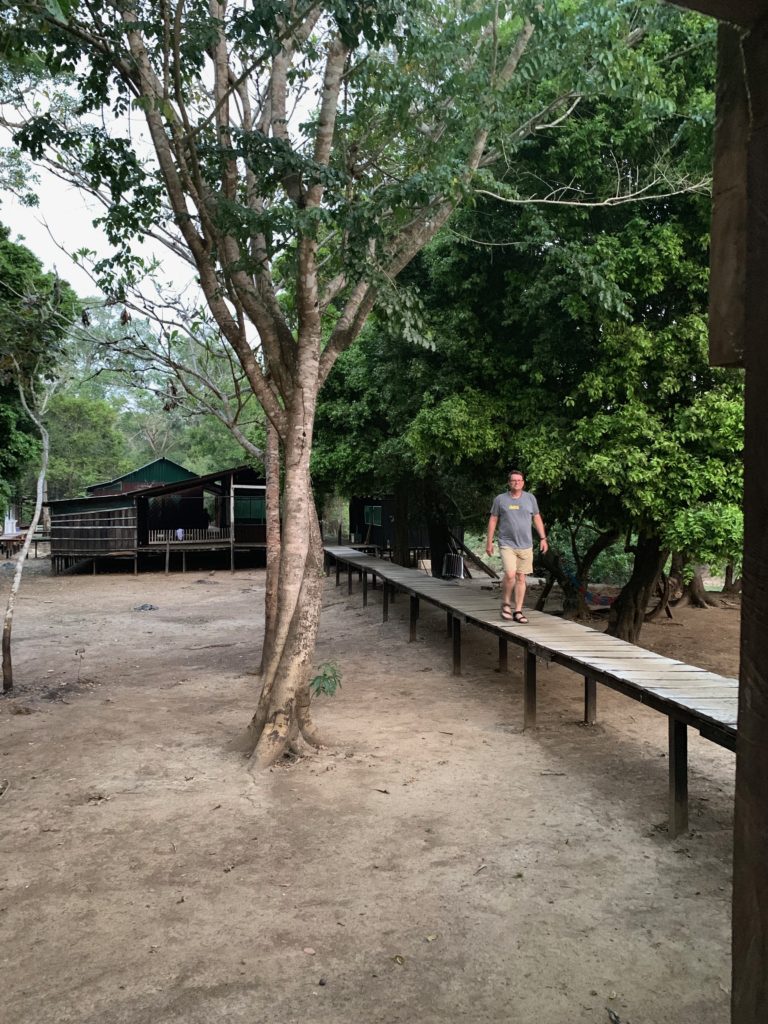
The next morning, Norman took us out for a sunrise boat ride. The river was bursting with activity. Howler monkeys greeted each other with their signature roar. Birds chattered in the brush, competing to be the loudest, and swooped through the air. Caiman half submerged, staked out their territory with violent shivers that stirred up the muddy water and intimidated potential rivals. We pulled over and walked up to a flat grassy area, where we watched the fuchsia sun rising over distant trees.
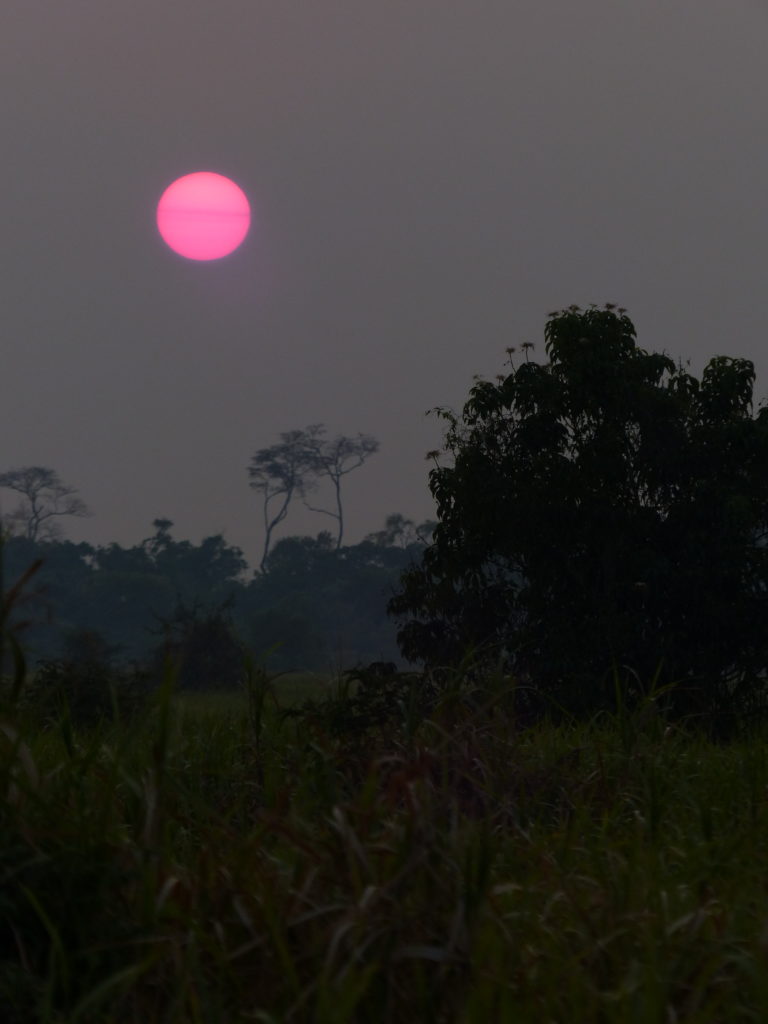
Back in the boat, Norman paused for a bit so we could see a face-off between two big caiman while another floated just under the surface, seemingly entranced.
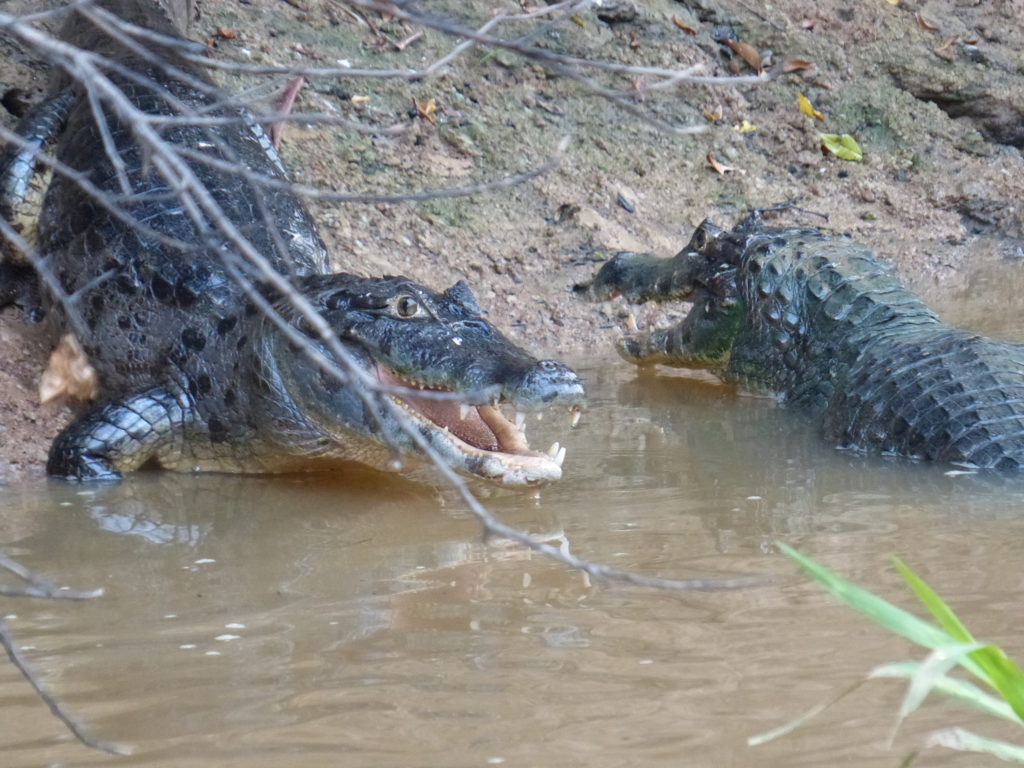
We also saw a few caiman flip fish into their mouths, and we witnessed a tiny kingfisher spearing a snack. The bushes overflowed with jungle chickens chomping on the leaves. Everyone was enjoying their breakfast. When we returned to the lodge, the tree by the kitchen was full of yellow squirrel monkeys. Cutest monkeys ever.
After a fabulous breakfast, we ditched Stella and Mane and headed back out in the boat. Norman pulled the boat ashore, and we all hiked through the pampas to a lagoon.
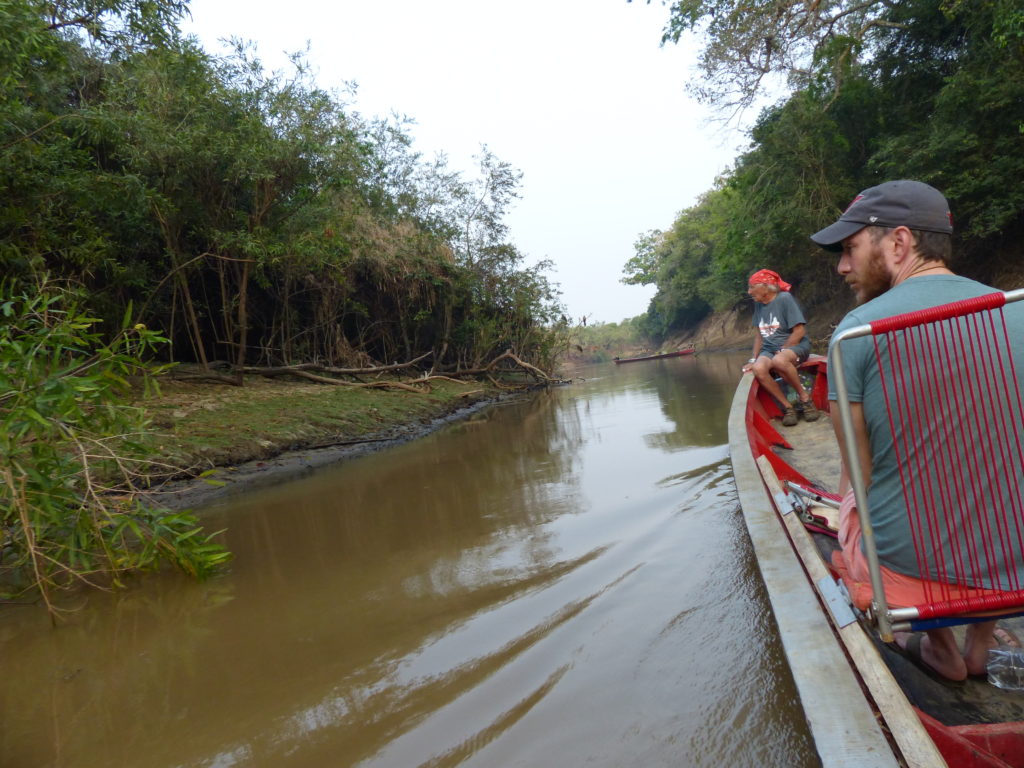
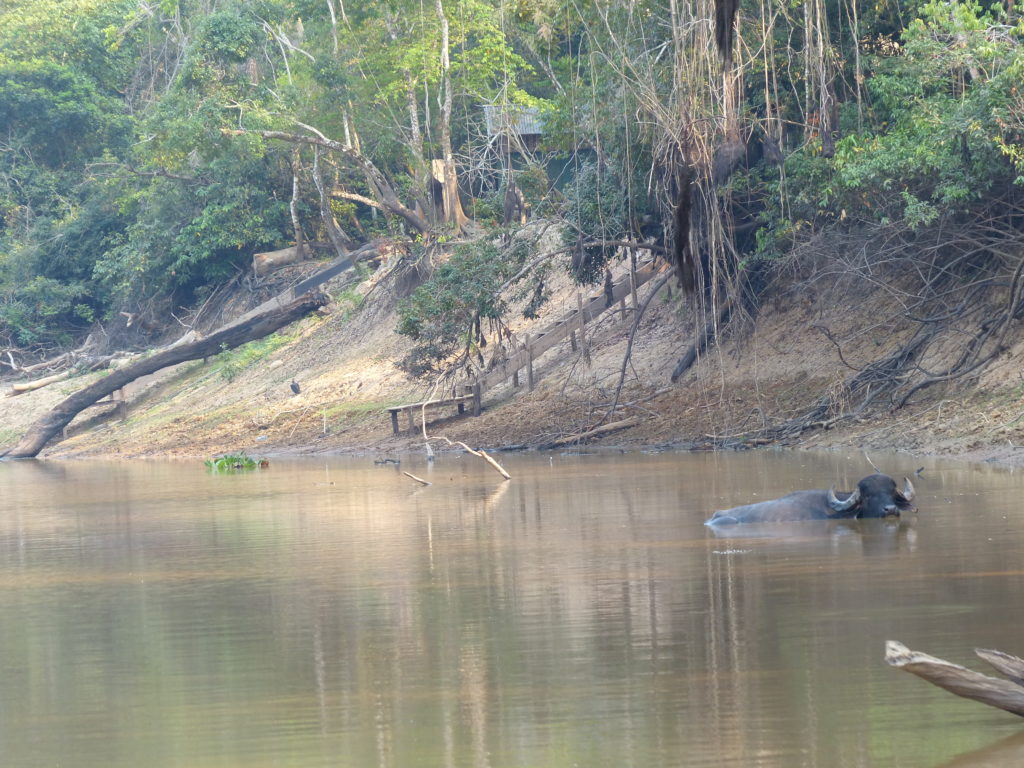
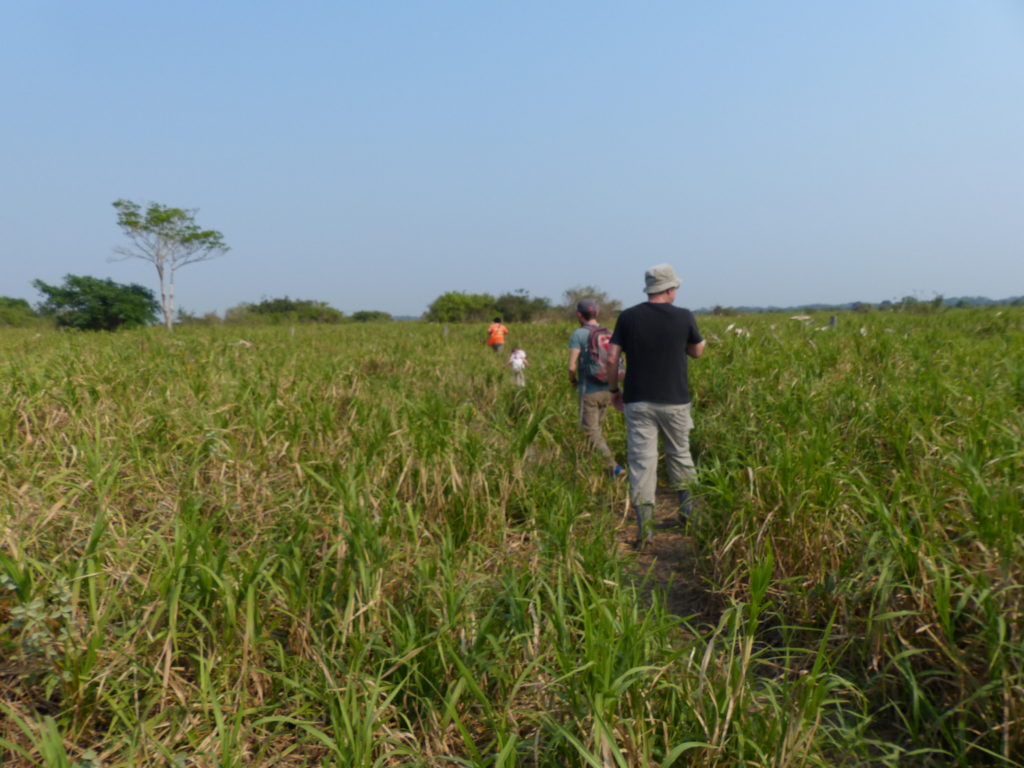
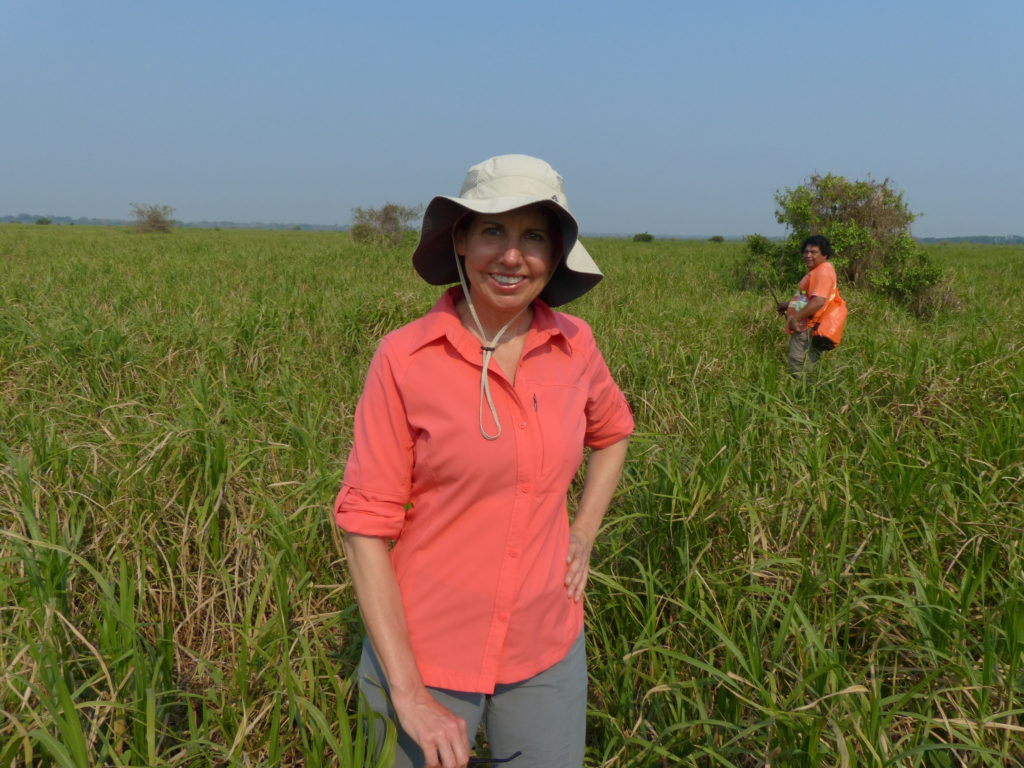
These cows came running to check us out.
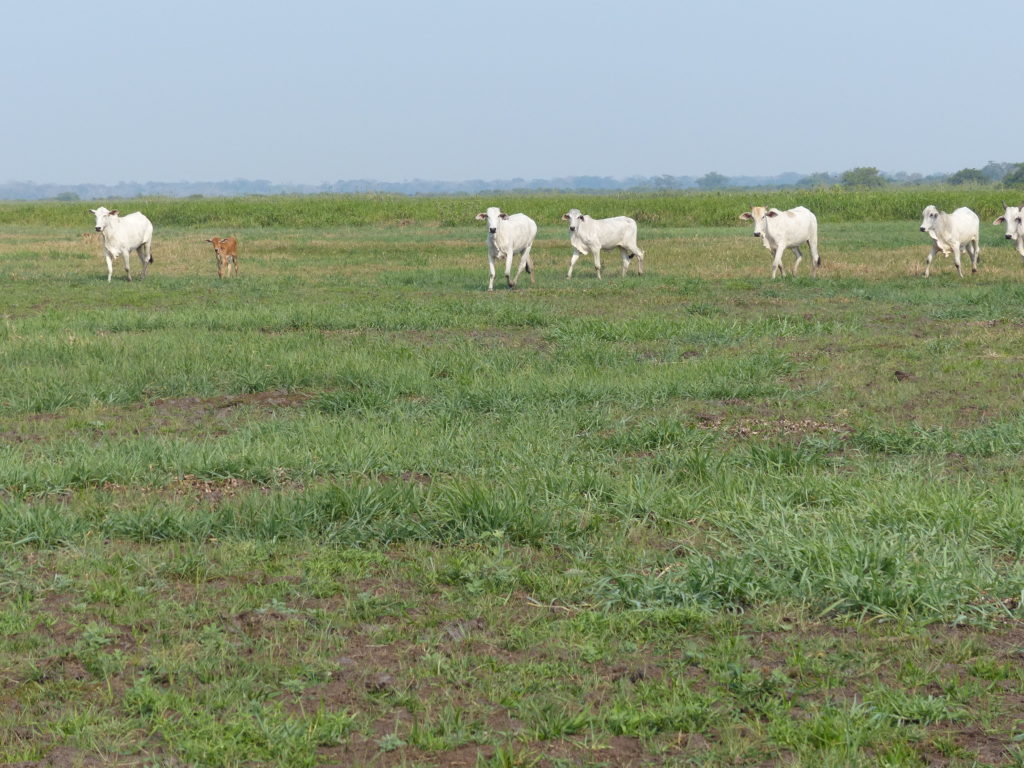
Norman said every year the river rises to cover the grassland, and everything dies. Then the water recedes, and everything grows back. Here, Berlin points to the high water mark on a post.
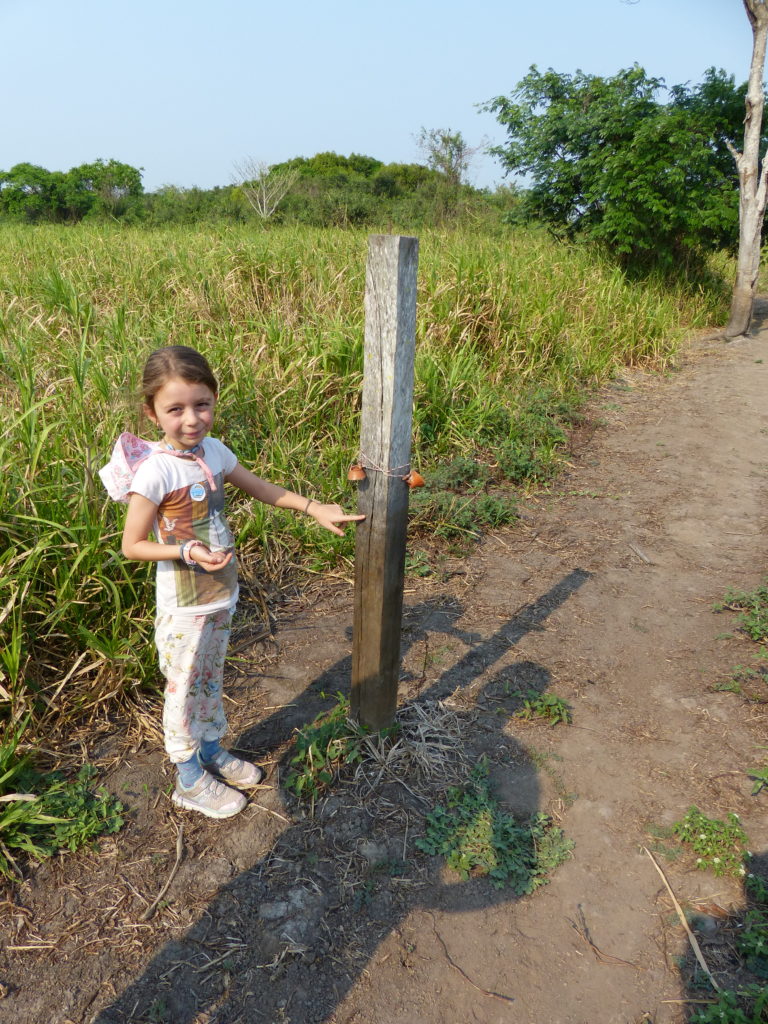
When we passed through a small grove of trees, we emerged at the edge of the lagoon, which looked like a massive bowl of bubbling caiman stew. There were thousands!
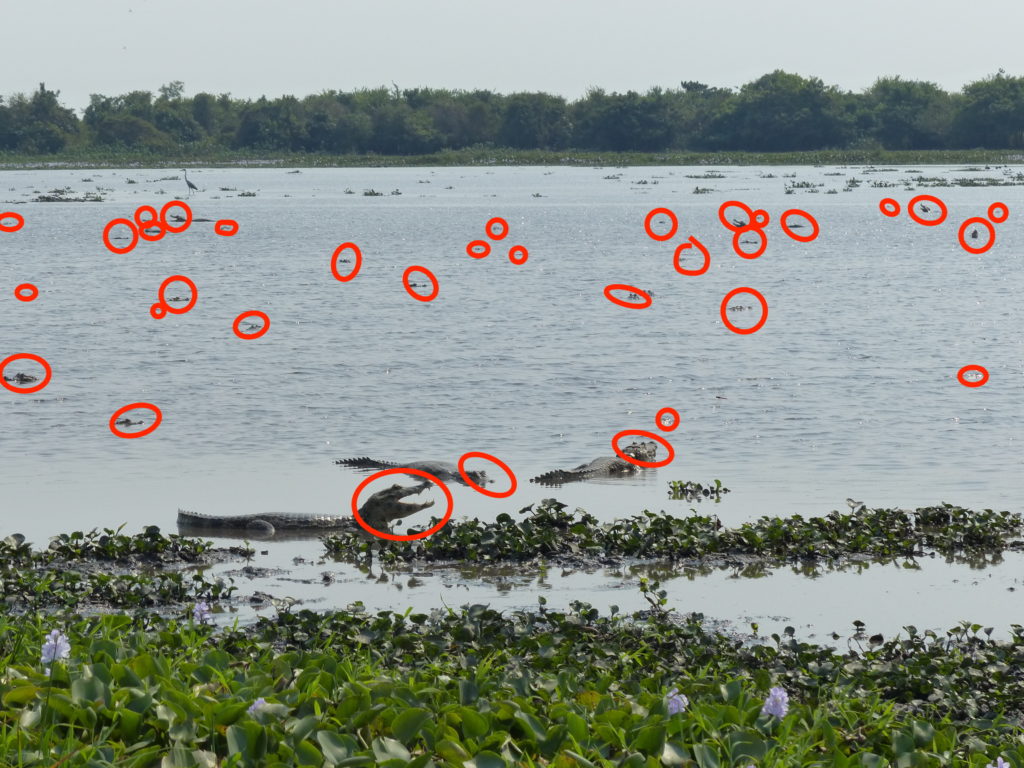
While the water level is high, caiman lay eggs far from the river, Norman explained. When the water recedes leaving a small lagoon, those newly hatched caiman hang out for a season until they can access the river safely.
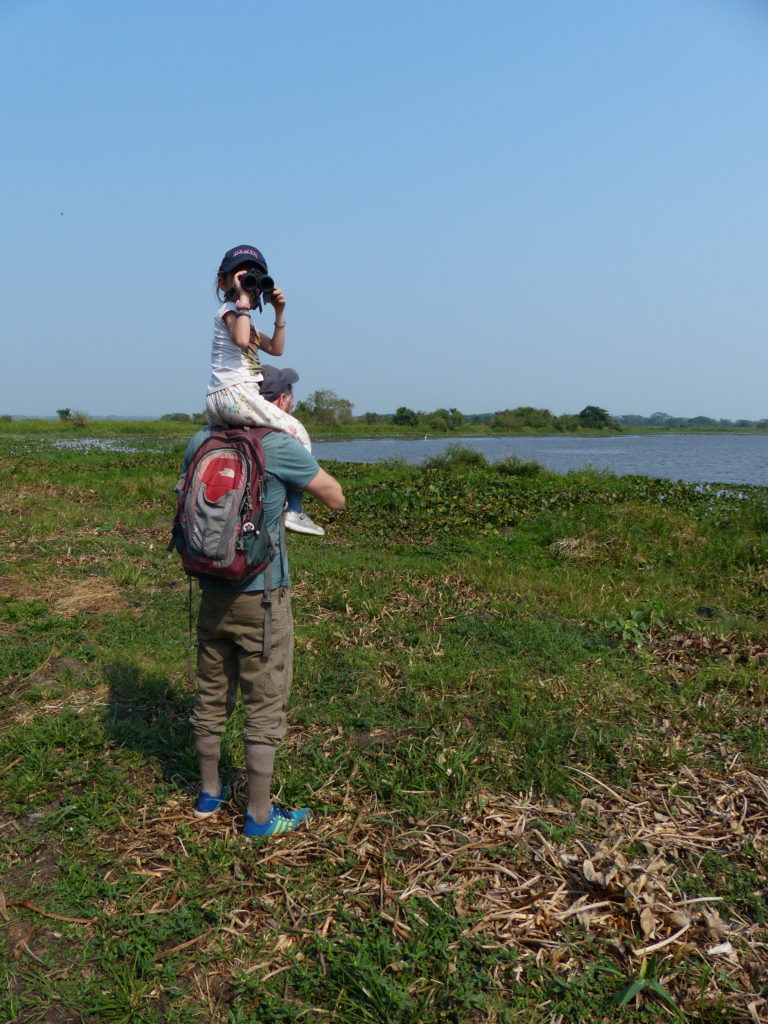
We hung out in the shade, watching storks poke around the water plants while flocks of white-faced whistler ducks swooped through the air. Norman ventured into the sludge to look for snakes.
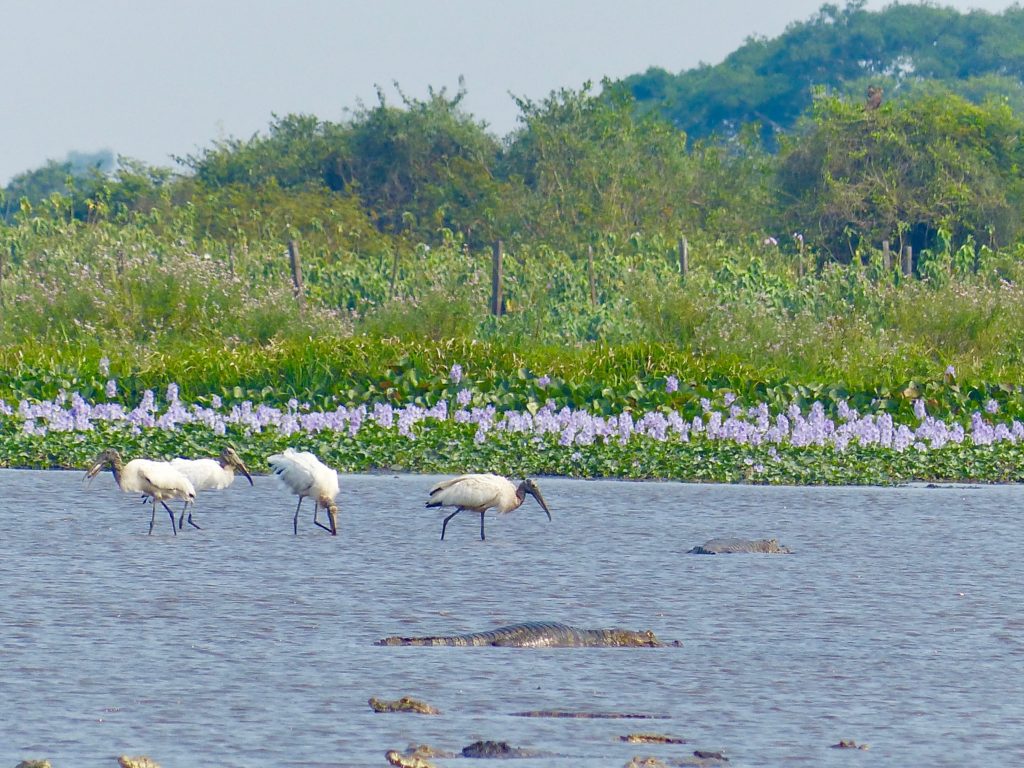
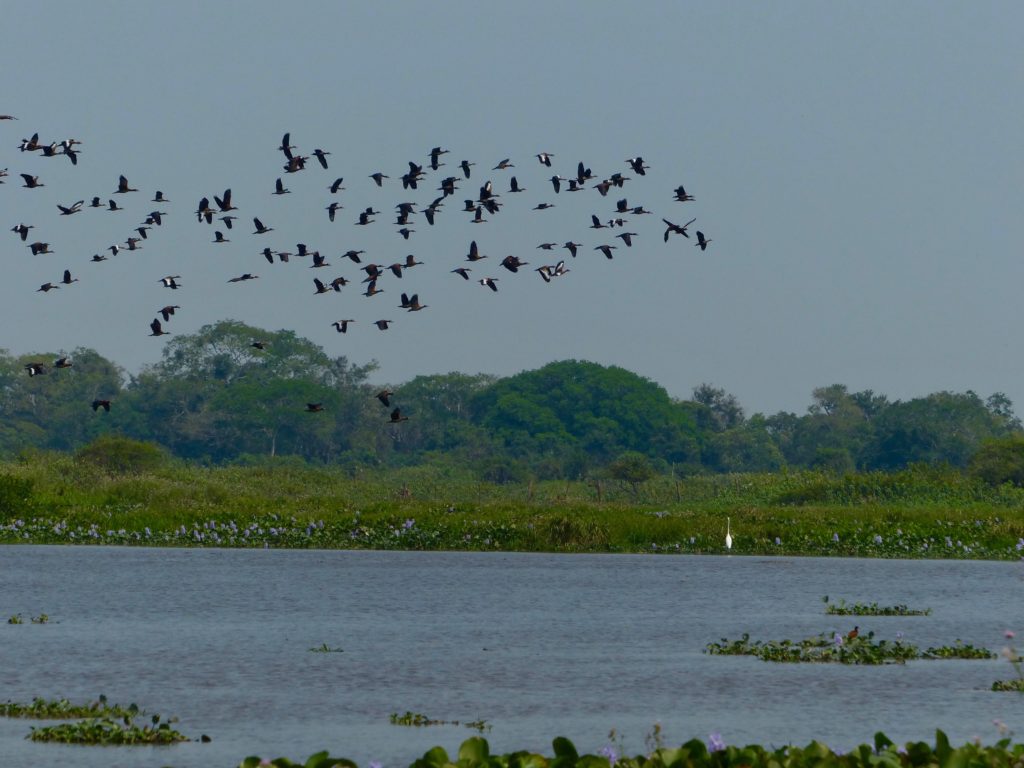
After awhile, another guide yelled that he had found one, so we all traipsed to the other side of the lagoon. It was a “false cobra,” a type of anaconda. Norman said it flares its neck like a cobra, but when it realizes you know it’s not venomous, then it plays dead. A group of tourists acted like idiots with the poor snake, and then we got to hold it.
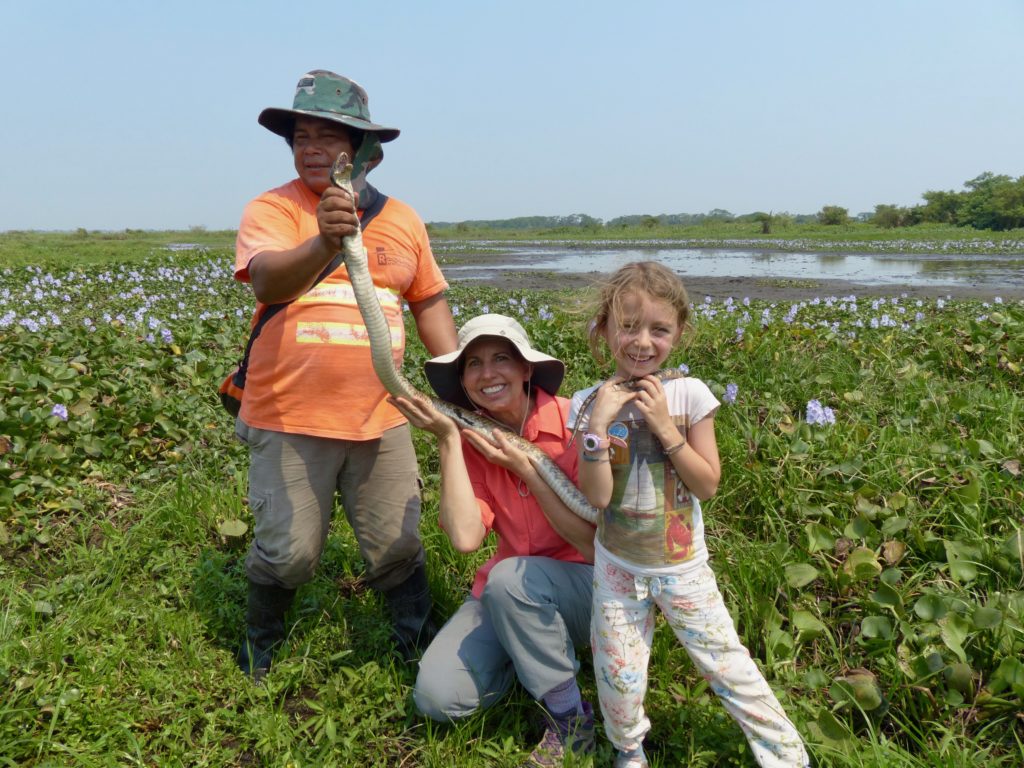
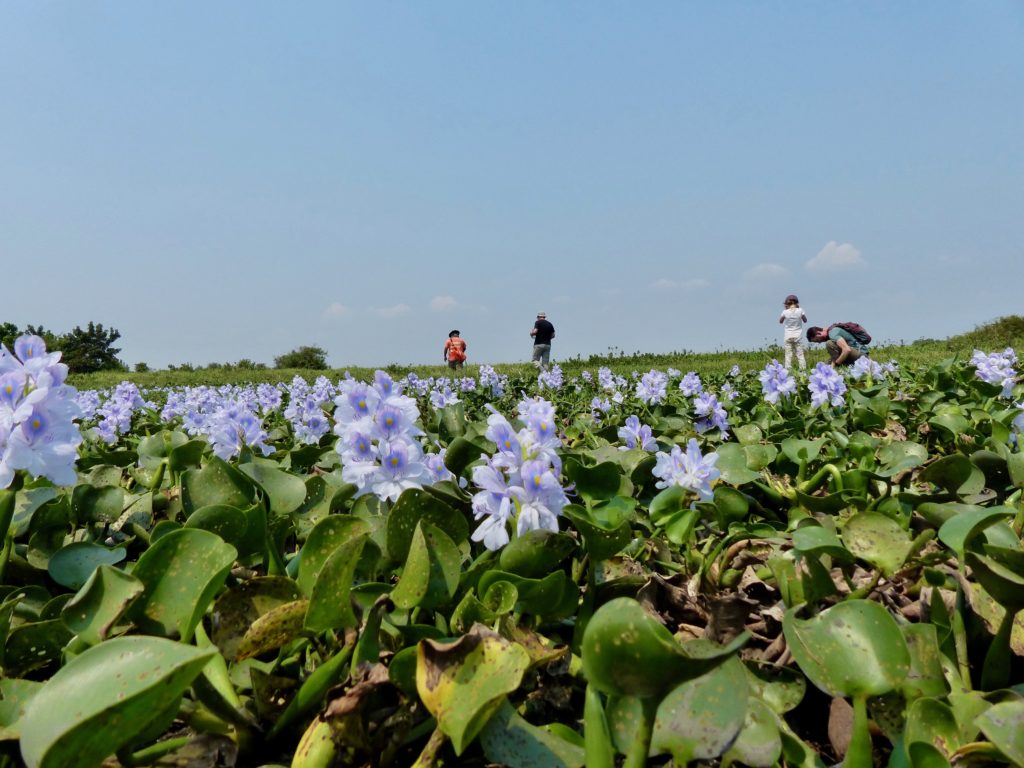
In the afternoon, Norman took the kids, Ian, and Peter out fishing for piranhas (which we ate for dinner). Stella, Tony, and I lounged around the lodge. For our final outing of the day, we motored upstream to watch the sunset and then back to the lodge in total darkness. Norman kept his flashlight aimed on the water ahead so we could see the creepy glow of caiman eyes that dotted the river.
Oh, pirahnas? Very toothy and bony. Not my favorite.
The next morning, a few of us headed out in the boat, but the river was eerily quiet. “Because of the weather,” said Norman. Rain clouds were rolling in.
We ate breakfast and packed up our bags to head home. Of course, that’s when the torrential downpour started. Norman delayed as long as he could, but we had to get back to the port of Tucumán for our ride to Rurrenabaque, where we would catch the plane to La Paz and connect to our flight to Santiago. It was going to be a long day of travel.
Norman handed us each a plastic rain slicker and bailed out the boat, and off we went. The rain never let up for the entire 3-hour journey, but I managed to get myself in a zen space and kind of appreciated it. At the little port, we said farewell to Norman, changed our clothes, and found our van driver. Then the next leg of our adventure began.
Remember the dusty “road” we took to get to the river? Now the dust had turned to mud. Our van slipped and slid all over the place until eventually we encountered a road block.
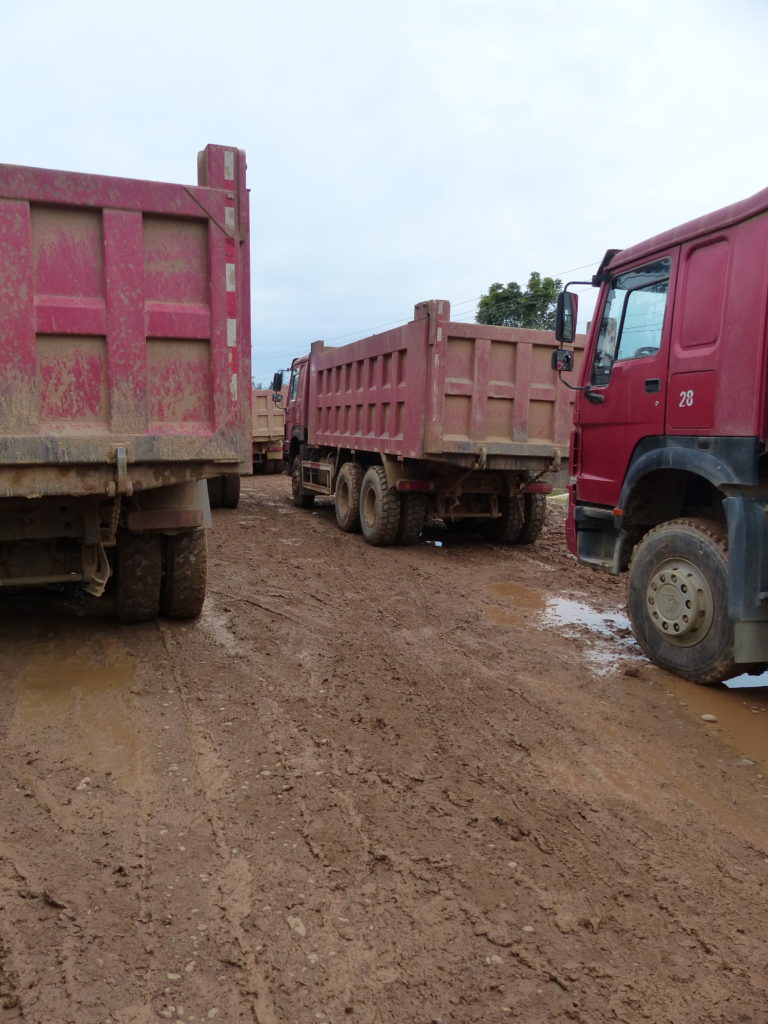
At this point, we were feeling pretty hopeless about getting back to Rurrenabaque on time for our flight. However, our badass driver just whipped that van around and took off. He drove onto some roads that didn’t look quite ready for vehicles. He wove through villages. He waved nonchalantly at road crew workers who tried to warn him. And sure enough, about four hours later, we arrived at the airport with time to spare.
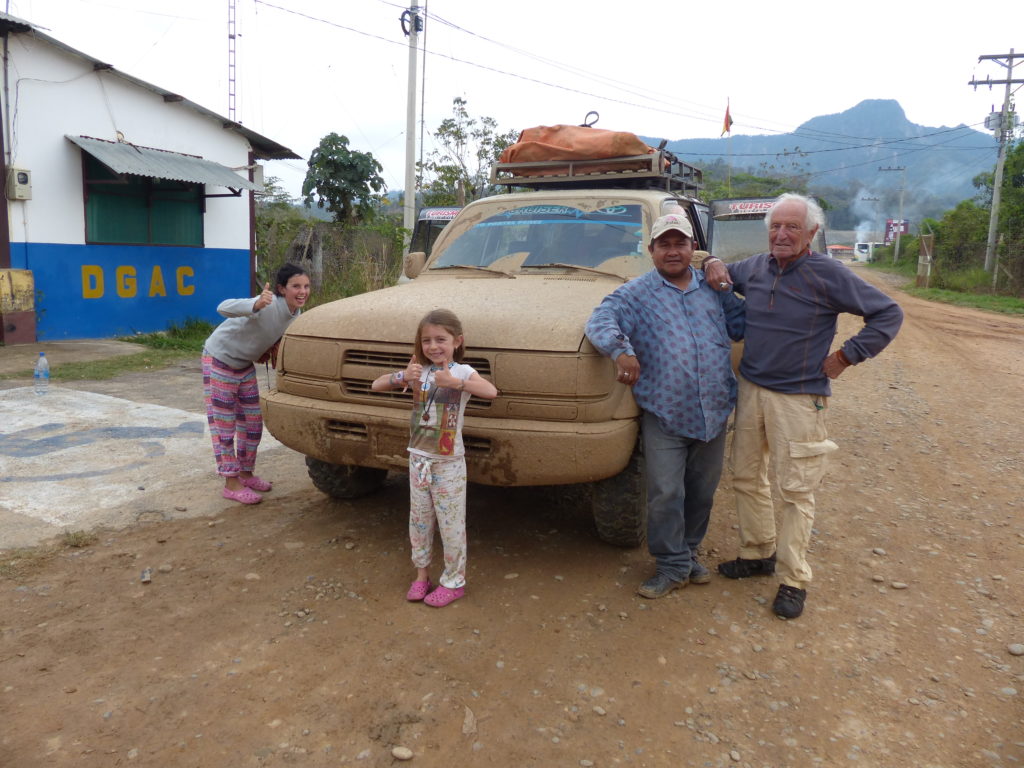
Our little puddle jumper returned us to La Paz, where we learned that we were likely bumped from our flight to Santiago. Apparently, the thin cold air prevented the plane from taking off with a full load of passengers. Ian played the “I’m-traveling-with-two-children-and-my-sick-old-father” card to no avail. Stella kept feeding the girls money to use the massage chairs while Ian and I hung out at the airline counter, waiting for news.
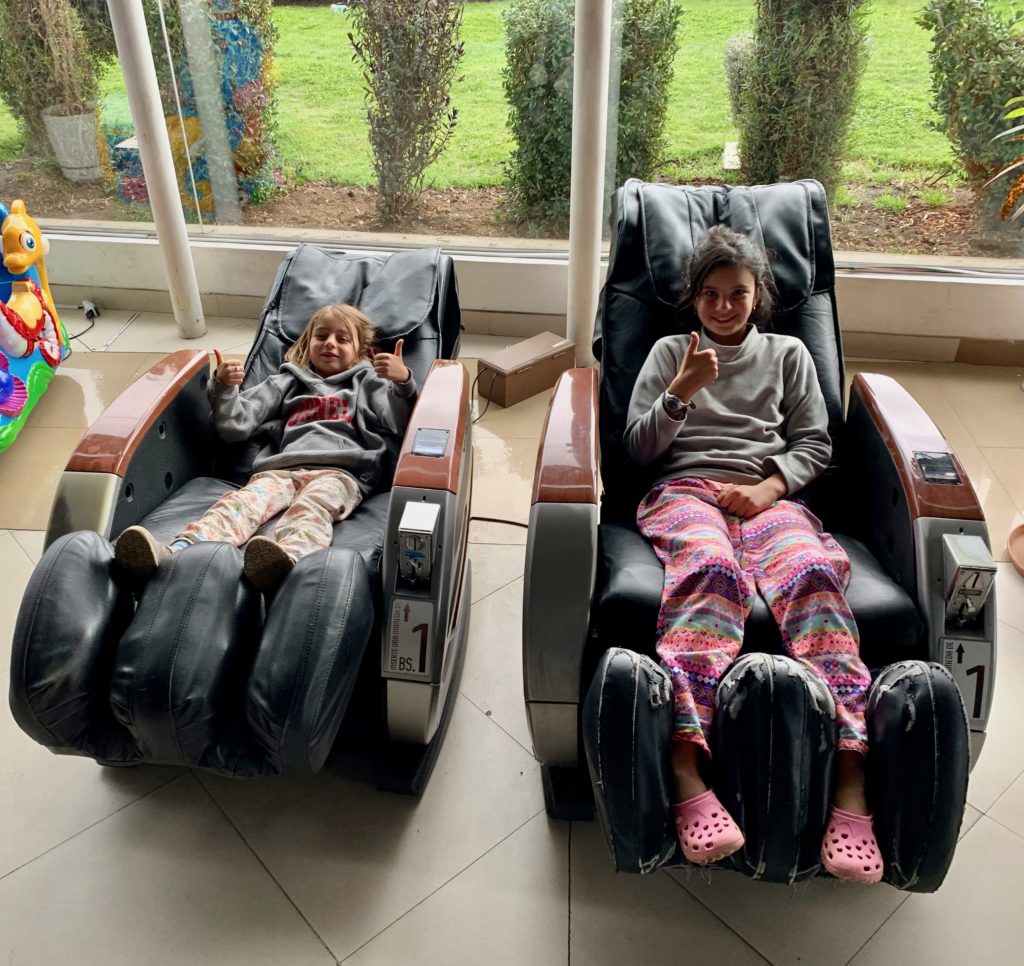
Eventually we accepted our fate. Latam Airlines drove us to a decent hotel in the city and covered the cost of meals until we could take off the next morning. On the plus side? It gave me time to weed through thousands of photos from our trip.
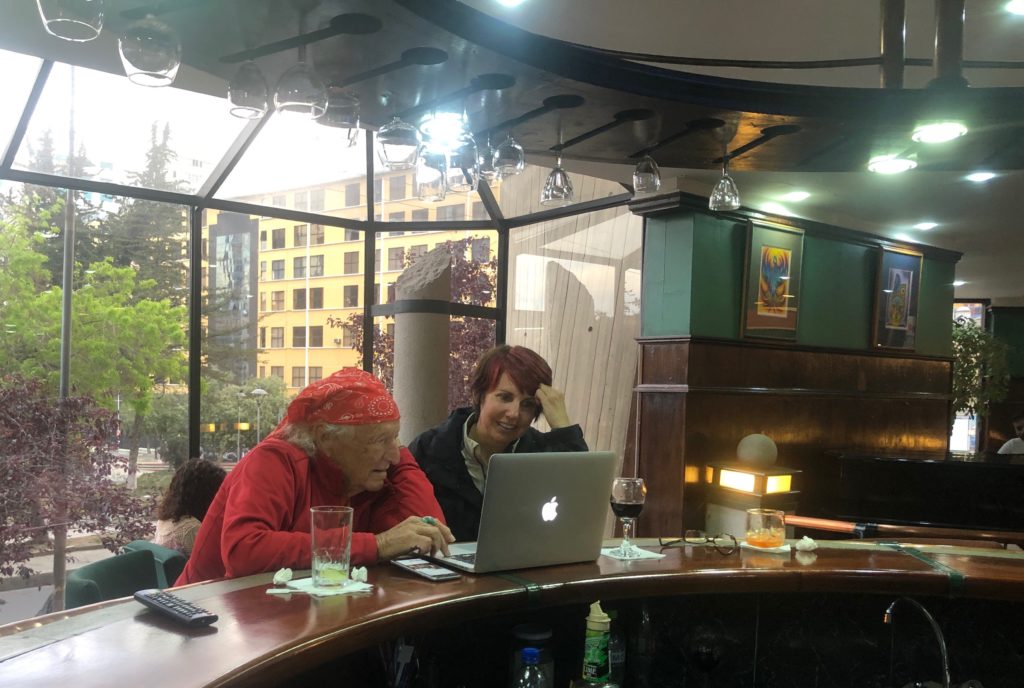
I am growing increasingly obsessed with birds. Here are some of my favorites from our Amazon adventure.
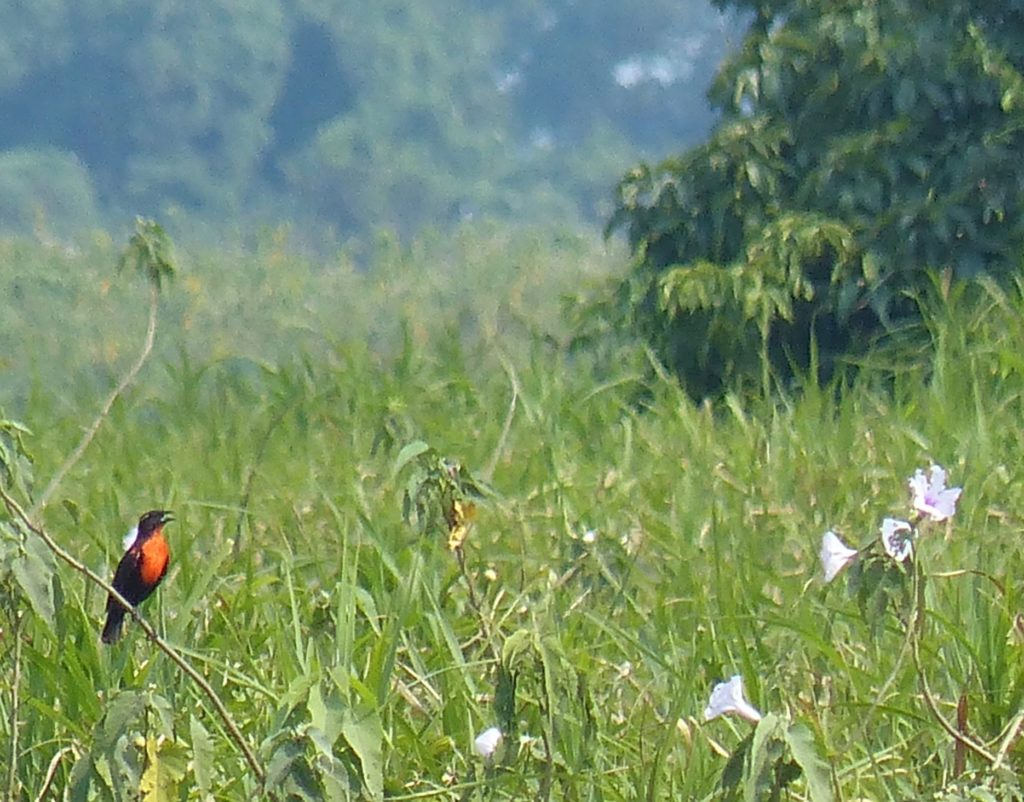
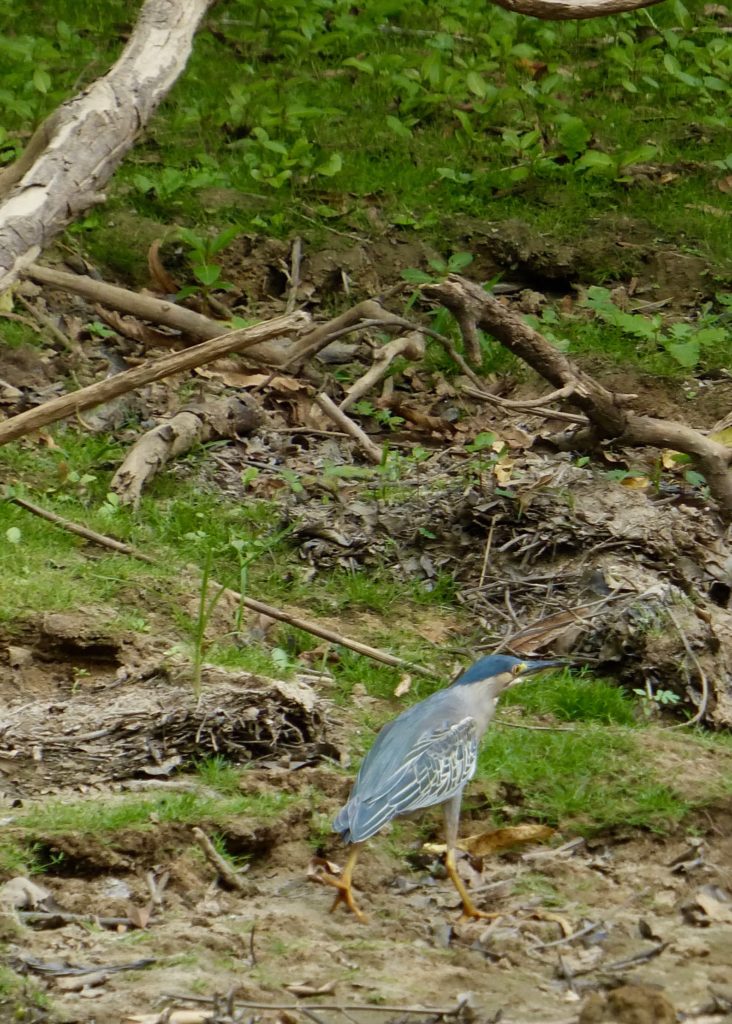
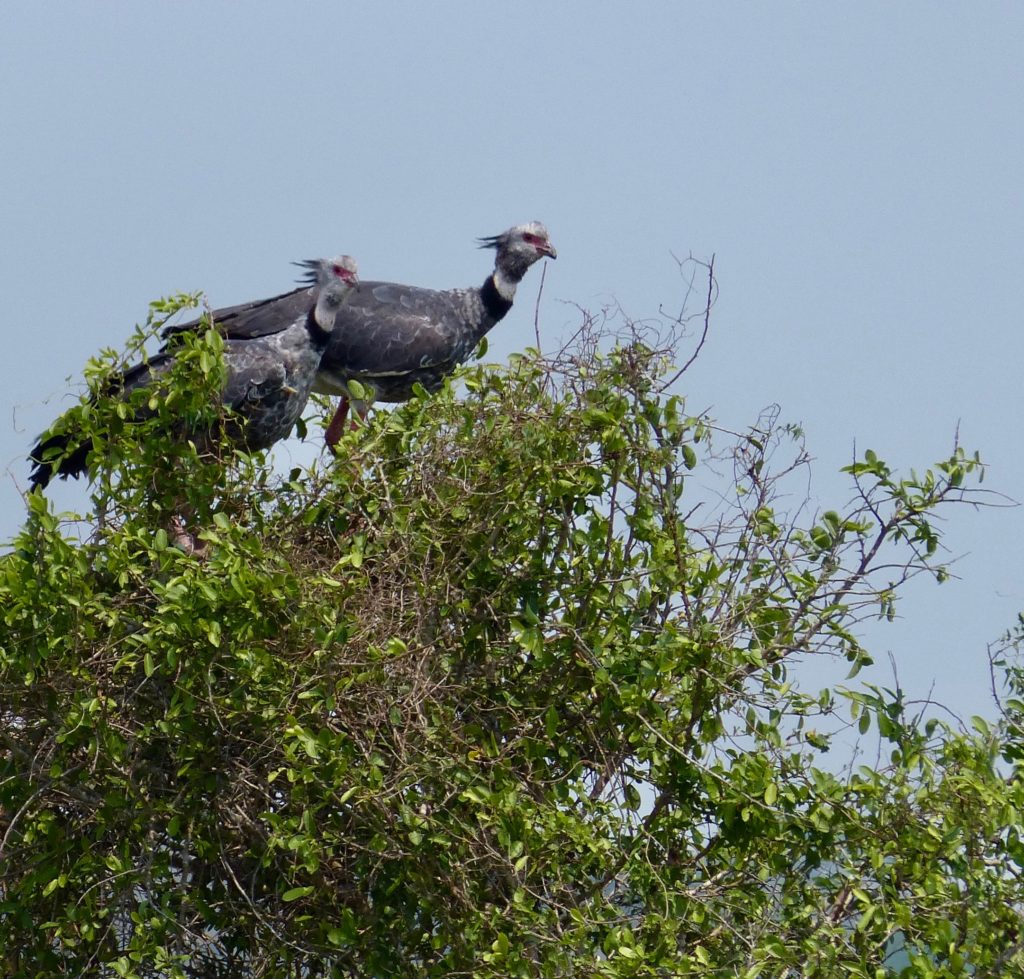
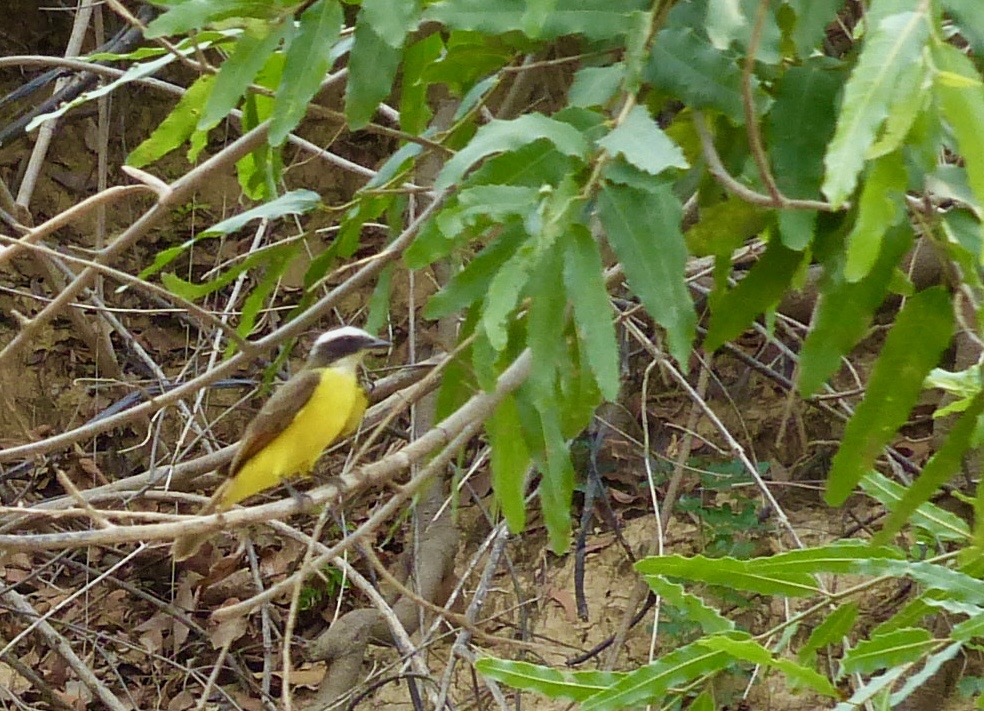
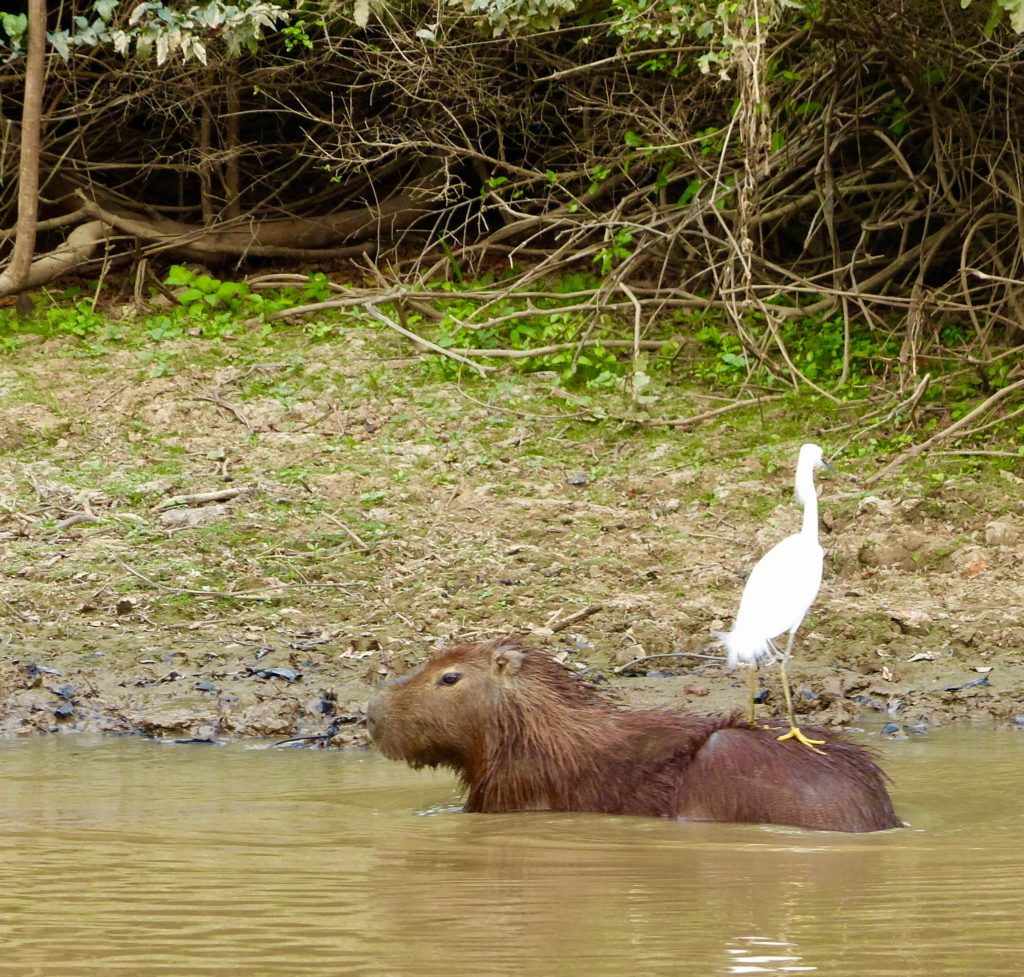
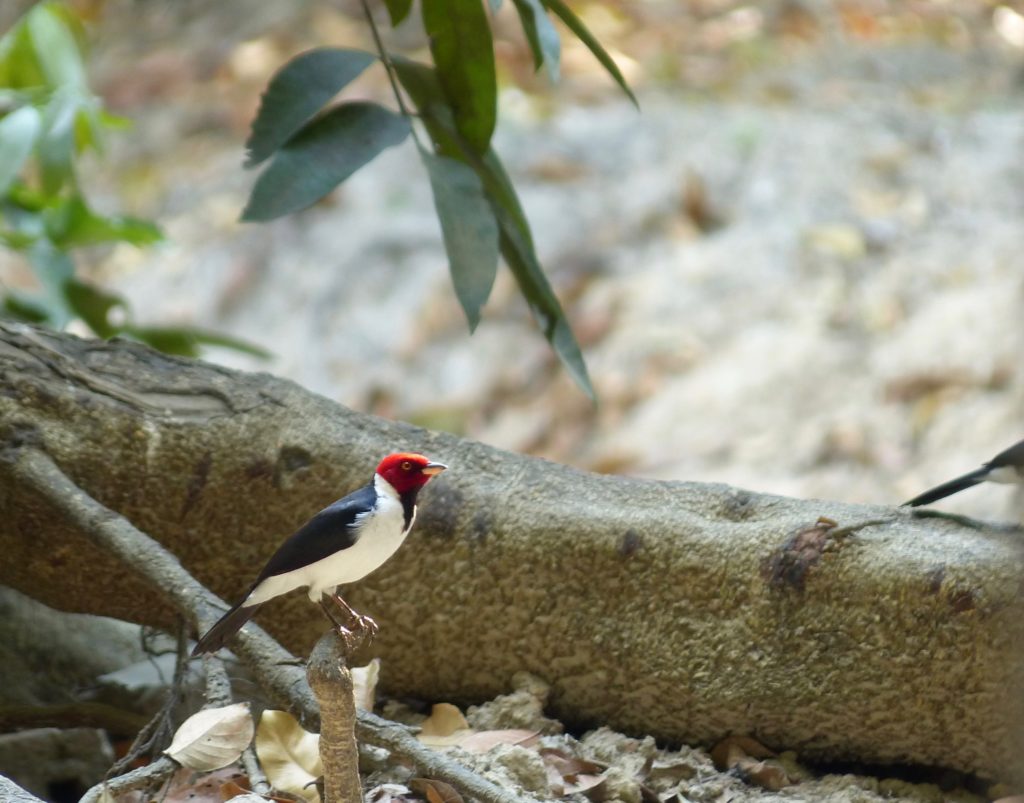
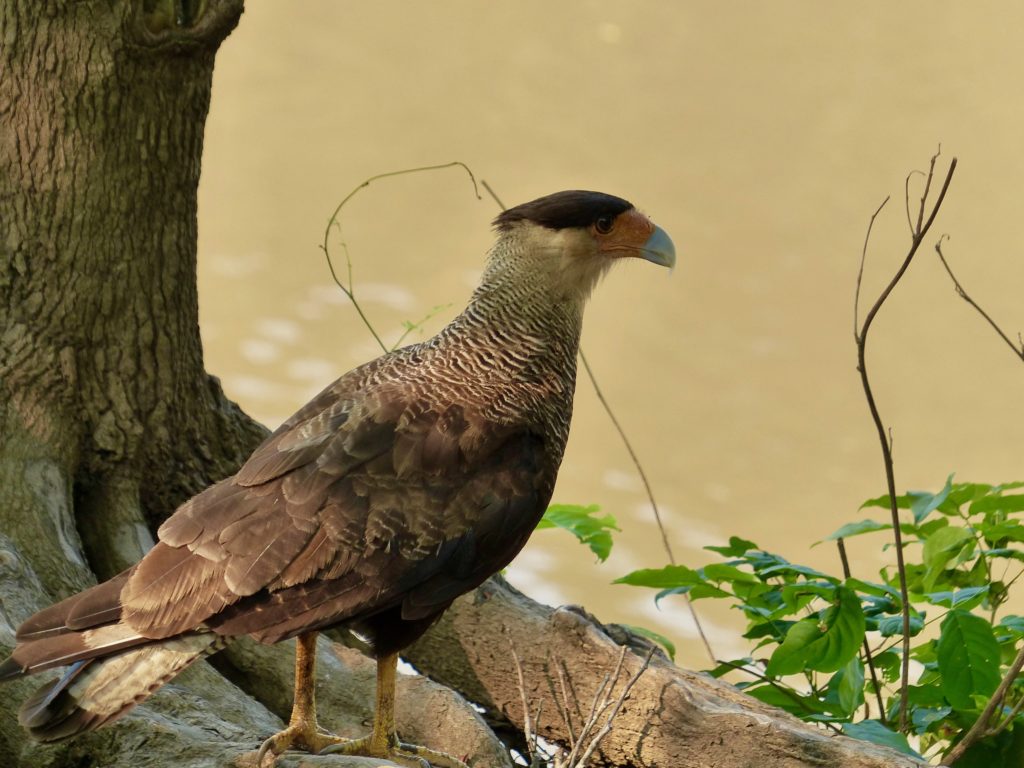
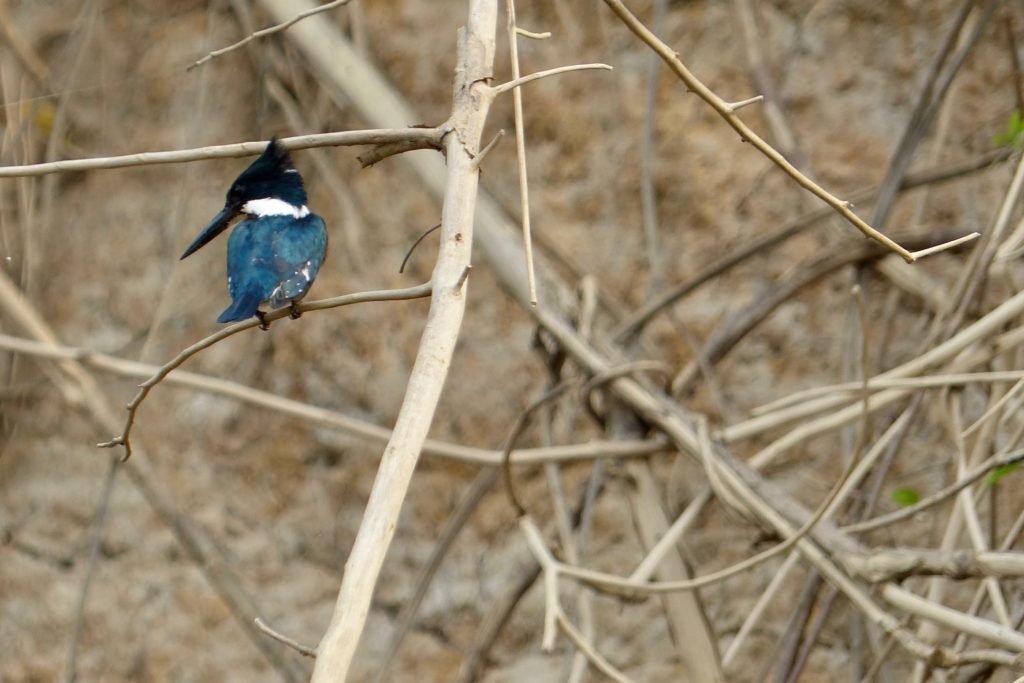
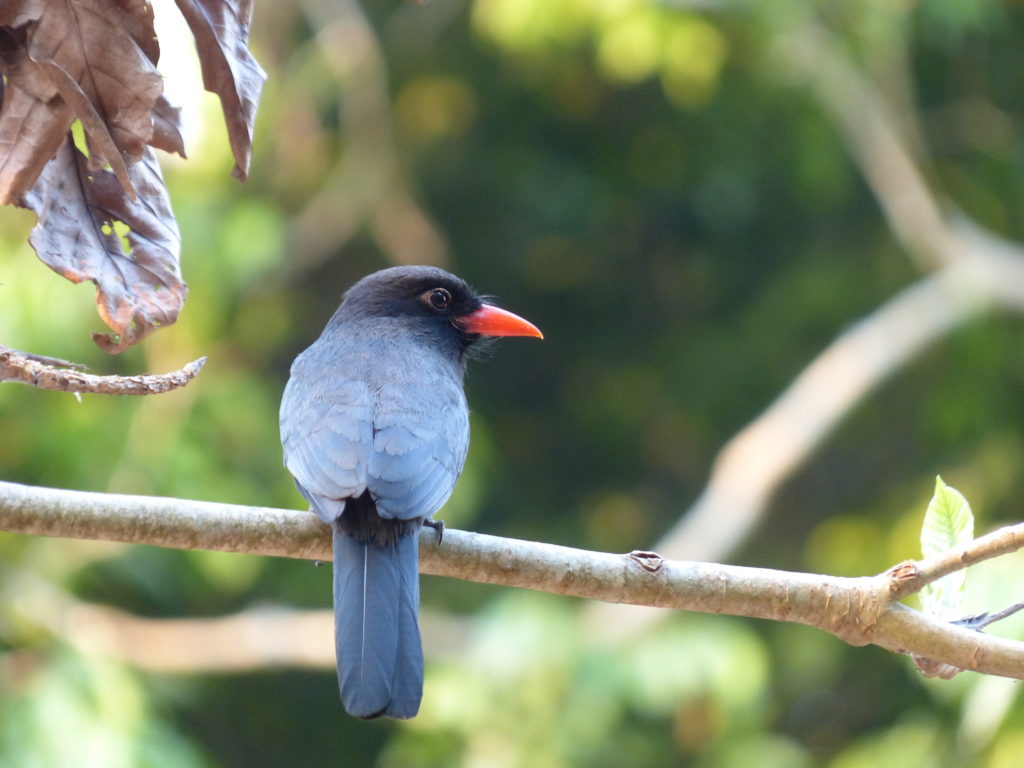
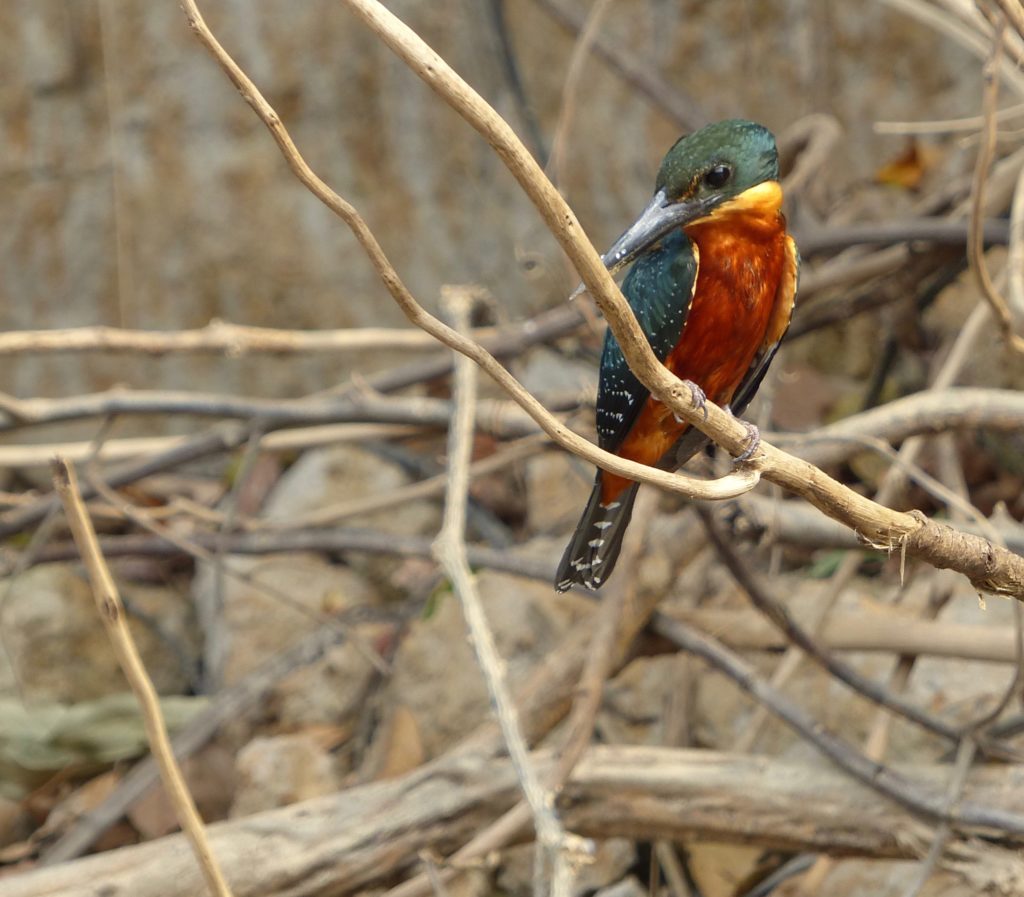
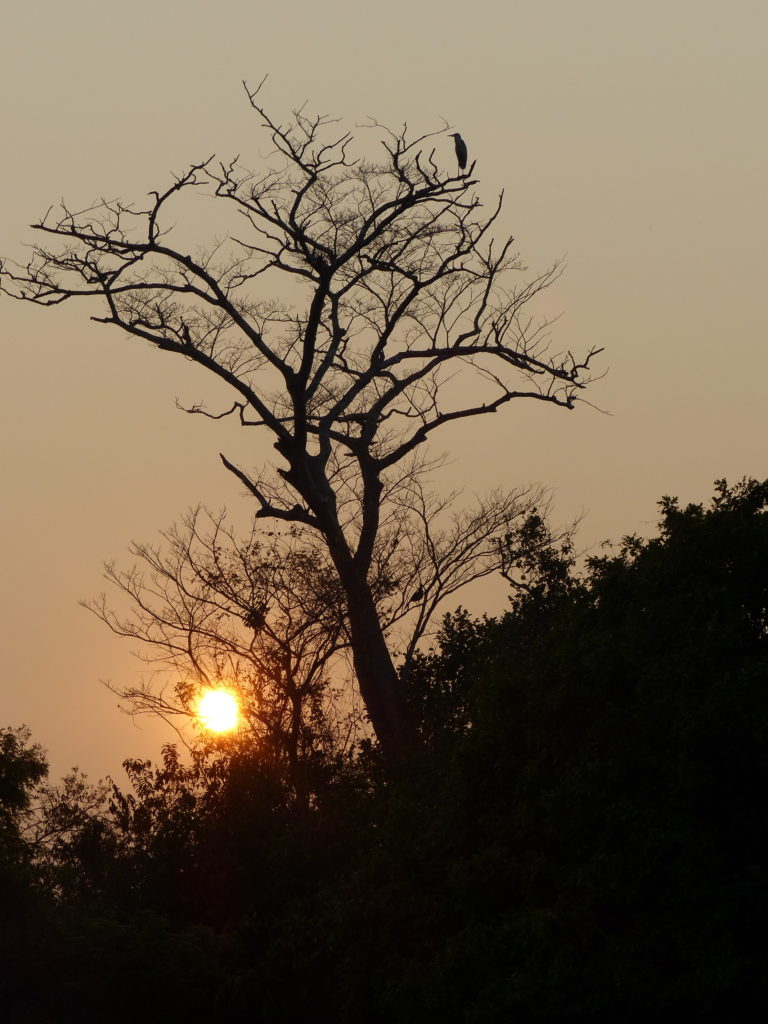
All right. I could do this all night. But it’s time to say good-bye to beautiful Bolivia.
